Sources
- Bryan, Michael (1886). Robert Edmund Graves (ed.). Dictionary of Painters and Engravers, Biographical and Critical. Vol. I: A-K. London: George Bell and Sons. p. 204.
Aurelio Buso (active c. 1520) was an Italian painter from Crema. He studied under Polidoro da Caravaggio and Maturino da Firenze, and assisted them in several of their works at Rome. He ornamented the palace of the noble family of Benzoni at Venice with friezes and other works in the style of Polidoro.

Polidoro Caldara, usually known as Polidoro da Caravaggio was an Italian painter of the Mannerist period, "arguably the most gifted and certainly the least conventional of Raphael's pupils", who was best known for his now-vanished paintings on the facades of Roman houses. He was unrelated to the later painter Michelangelo Merisi da Caravaggio, usually known just as Caravaggio, but both came from the town of Caravaggio.

Caravaggio is a town and comune in the province of Bergamo, in Lombardy, Italy, 40 kilometres (25 mi) east of Milan.

Giovanni Battista Castello was an Italian historical painter.

The Madonna of Foligno is a painting by the Italian High Renaissance painter Raphael, executed c. 1511–1512. First painted on wood panel, it was later transferred to canvas.
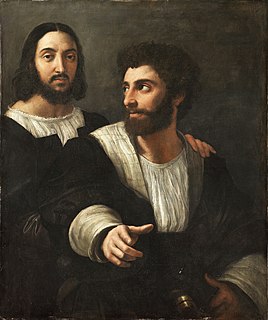
The Self-Portrait with a Friend is a painting by Italian High Renaissance painter Raphael. It dates to 1518–1520, and is in the Louvre Museum of Paris, France. Whether the figure on the left is actually a self-portrait by Raphael is uncertain, although it was already identified as such in a 16th-century print.

Pordenone, Il Pordenone in Italian, is the byname of Giovanni Antonio de’ Sacchis, an Italian Mannerist painter, loosely of the Venetian school. Vasari, his main biographer, wrongly identifies him as Giovanni Antonio Licinio. He painted in several cities in northern Italy "with speed, vigor, and deliberate coarseness of expression and execution—intended to shock".
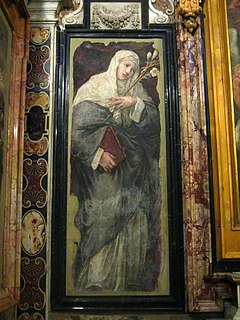
Maturino da Firenze (1490–1528) was an Italian painter, born in Florence, but working in Rome during the Renaissance.
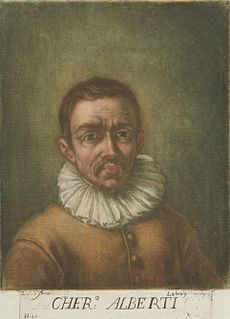
Cherubino Alberti (1553–1615), also called Borghegiano, was an Italian engraver and painter. He is most often remembered for the Roman frescoes completed with his brother Giovanni Alberti during the papacy of Clement VIII. He was most prolific as an engraver of copper plates.
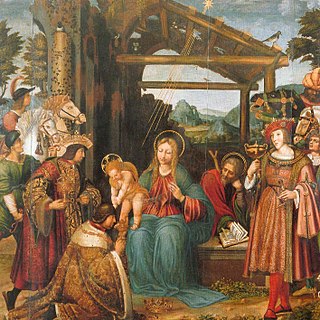
Marco Cardisco, also known as Marco Calabrese, was an Italian painter of the Renaissance period, active mainly in Naples during 1508–1542.
Giovanni Vincenzo Corso was an Italian painter of the Renaissance period. He was born in Naples. He was a pupil of Giovanni Antonio Amato and influenced by Pietro Perugino, Andrea Sabbatini, and Polidoro da Caravaggio, and subsequently went to Rome, where he assisted Perin del Vaga. Most of the works of this artist in the churches at Naples have been damaged and retouched. They include a Christ bearing his Cross for the church of San Domenico Maggiore, and an Adoration of the Magi for the church of San Lorenzo Maggiore. He died in Rome in 1545.
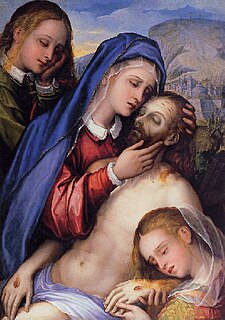
Giovanni Bernardo Lama (1508–1579) was an Italian painter of the Renaissance period, active mainly in Naples. He was the son of a generally unknown artist, Matteo Lama. He was the apprentice of Giovanni Antonio D’Amato, then Polidoro da Caravaggio who had fled Rome after the Sack of 1527. He worked in the style of his friend and contemporary Andrea di Salerno. A Madonna and child with saints is in the sacristy of San Luca Evangelista in Praiano. A Deposition from the Cross is found in the Royal Basilica of San Giacomo Spagnoli in Naples.
Events from the year 1543 in art.
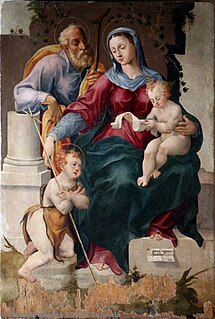
Pietro Negroni, also called Il Giovane Zingaro and Lo zingarello di Cosenza, was an Italian painter of the Renaissance period, active mainly in Naples. He was known for his altarpieces, mythological scenes and portraits.
Francesco Ruviali was an Italian painter of the Renaissance period.

Mariano Riccio was an Italian painter of the Renaissance period.
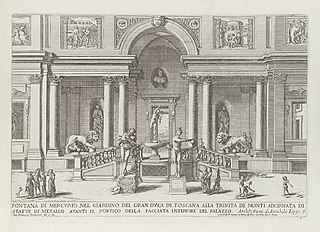
Giovanni Francesco Venturini (1650–1710) was an Italian printmaker of the Baroque period.
Camillo Tinti was an Italian engraver, born in Rome. He was employed by Gavin Hamilton to engrave some of the plates for his Schola Itálica; among these were the following: The Marriage of St. Catherine after Parmigianino; Meleager and Atalanta after Polidoro da Caravaggio; and Christ on the Mount of Olives after Giovanni Lanfranco.
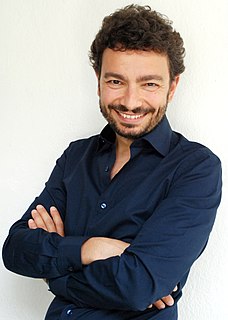
Massimo Polidoro is an Italian psychologist, writer, journalist, television personality, co-founder and executive director of the Italian Committee for the Investigation of Claims of the Pseudoscience (CICAP).

Polidoro de Rienzo da Lanciano was an Italian painter.
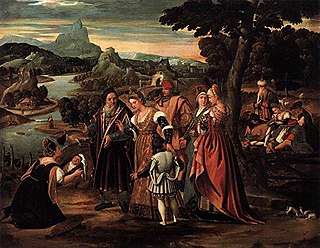
Stefano Cernotto was an Italian painter of Croatian origin. His name has numerous variations but, at birth, it was most likely Cernotis or Zernotis.